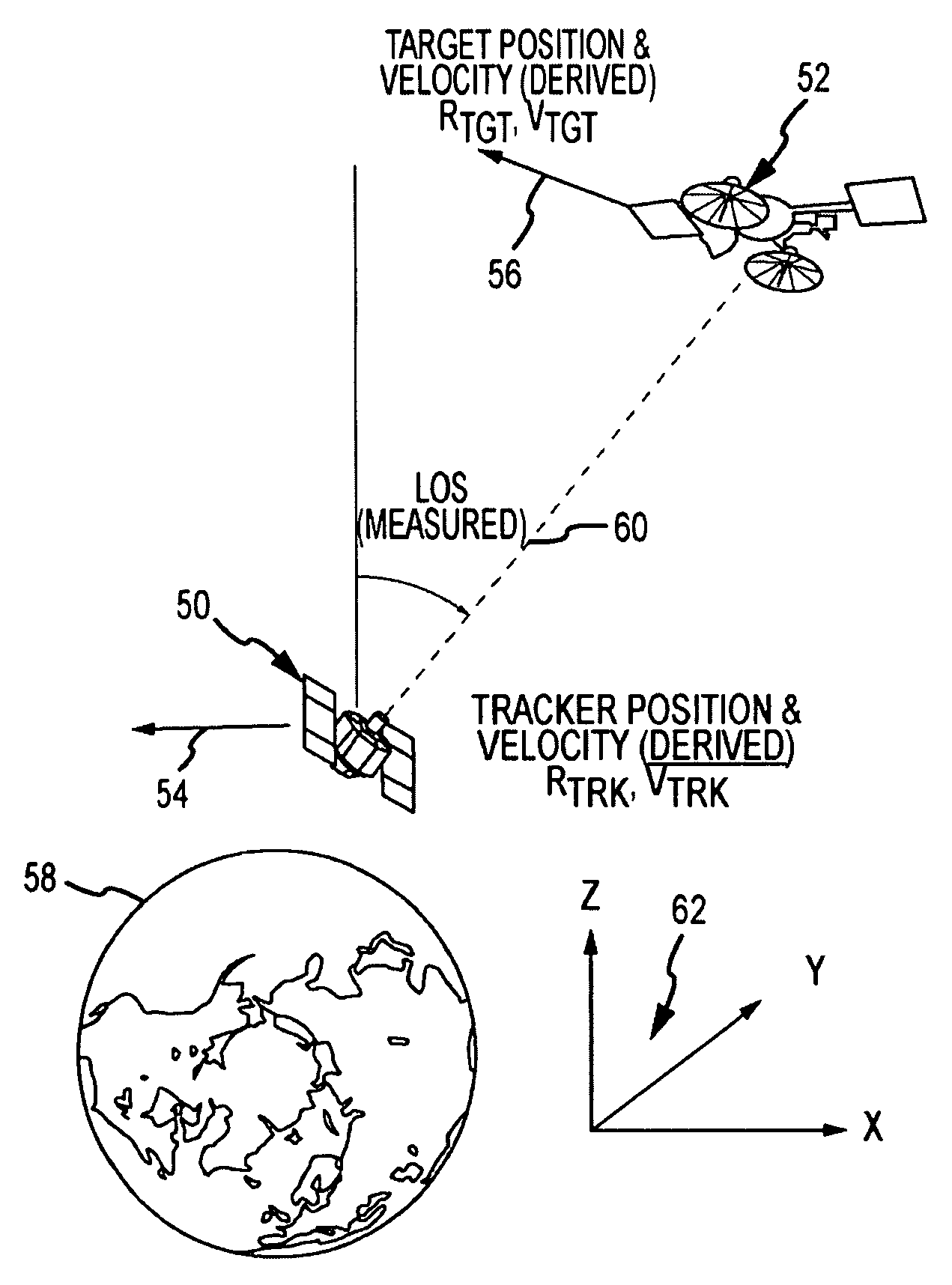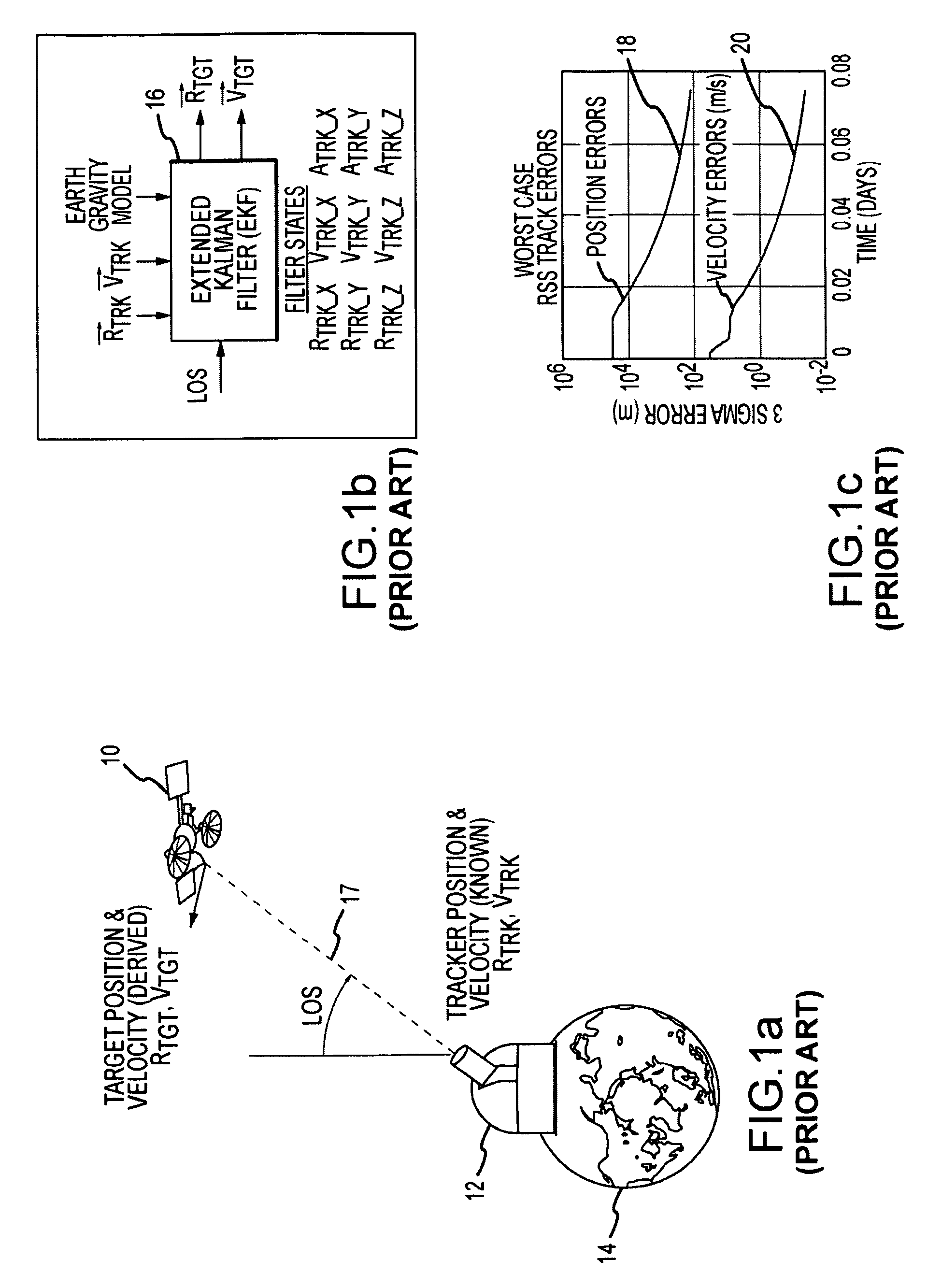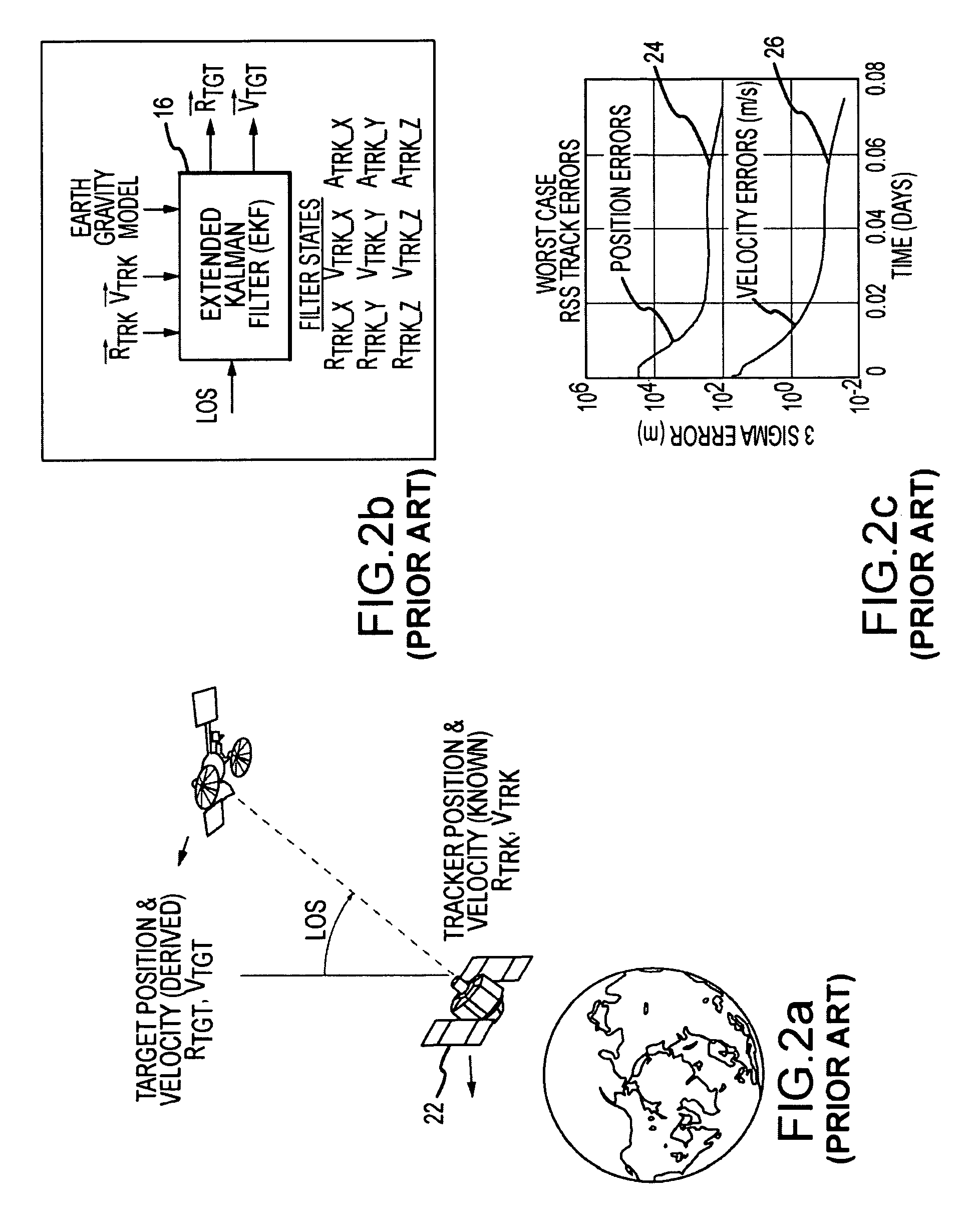System and method of passive and autonomous navigation of space vehicles using an extended Kalman filter
a technology of passive and autonomous navigation and space vehicles, applied in the field of space situational awareness, can solve the problems of increasing system mass and cost, increasing system complexity, and requiring additional capability
- Summary
- Abstract
- Description
- Claims
- Application Information
AI Technical Summary
Benefits of technology
Problems solved by technology
Method used
Image
Examples
Embodiment Construction
[0035]It is presumed and commonly accepted by those skilled in the art of satellite navigation and Kalman filter design that the filter must be provided with updated and accurate tracker position and velocity a priori in order to determine target position and velocity. Indeed, it is generally asserted that without a priori knowledge (known or measured values) of the tracker position and velocity, line of sight measurements between satellites do not contain adequate information to infer target states. The system is underdetermined and thus an infinite number of solutions exist.
[0036]In fact, if the extended Kalman filter is reconfigured there is sufficient observability to estimate both target and tracker states relative to an inertial frame of reference in the gravitational field of a gravitation body. Typically, the inertial frame of reference is coincident with an Earth centered coordinate frame (or that of the gravitational body) to simplify the filter equations and produce posit...
PUM
 Login to View More
Login to View More Abstract
Description
Claims
Application Information
 Login to View More
Login to View More - R&D
- Intellectual Property
- Life Sciences
- Materials
- Tech Scout
- Unparalleled Data Quality
- Higher Quality Content
- 60% Fewer Hallucinations
Browse by: Latest US Patents, China's latest patents, Technical Efficacy Thesaurus, Application Domain, Technology Topic, Popular Technical Reports.
© 2025 PatSnap. All rights reserved.Legal|Privacy policy|Modern Slavery Act Transparency Statement|Sitemap|About US| Contact US: help@patsnap.com



